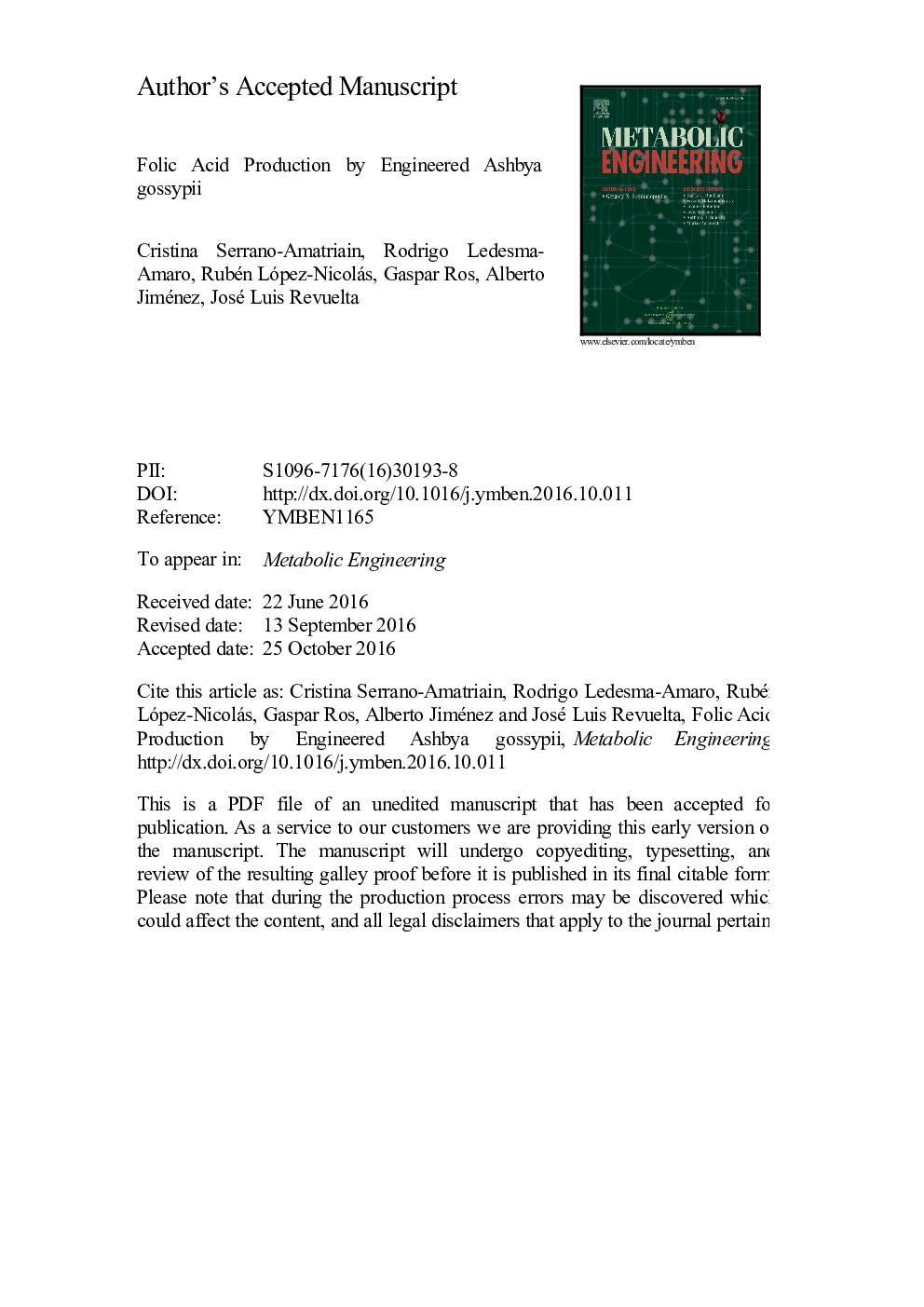| Article ID | Journal | Published Year | Pages | File Type |
|---|---|---|---|---|
| 6494228 | Metabolic Engineering | 2016 | 27 Pages |
Abstract
Folic acid (vitamin B9) is the common name of a number of chemically related compounds (folates), which play a central role as cofactors in one-carbon transfer reactions. Folates are involved in the biosynthesis and metabolism of nucleotides and amino acids, as well as supplying methyl groups to a broad range of substrates, such as hormones, DNA, proteins, and lipids, as part of the methyl cycle. Humans and animals cannot synthesize folic acid and, therefore, need them in the diet. Folic acid deficiency is an important and underestimated problem of micronutrient malnutrition affecting billions of people worldwide. Therefore, the addition of folic acid as food additive has become mandatory in many countries thus contributing to a growing demand of the vitamin. At present, folic acid is exclusively produced by chemical synthesis despite its associated environmental burdens. In this work, we have metabolically engineered the industrial fungus Ashbya gossypii in order to explore its potential as a natural producer of folic acid. Overexpression of FOL genes greatly enhanced the synthesis of folates and identified GTP cyclohydrolase I as the limiting step. Metabolic flux redirection from competing pathways also stimulated folic acid production. Finally, combinatorial engineering synergistically increased the production of different bioactive forms of the folic vitamin. Overall, strains were constructed which produce 146-fold (6595 µg/L) more vitamin than the wild-type and by far represents the highest yield reported.
Related Topics
Physical Sciences and Engineering
Chemical Engineering
Bioengineering
Authors
Cristina Serrano-Amatriain, Rodrigo Ledesma-Amaro, Rubén López-Nicolás, Gaspar Ros, Alberto Jiménez, José Luis Revuelta,
